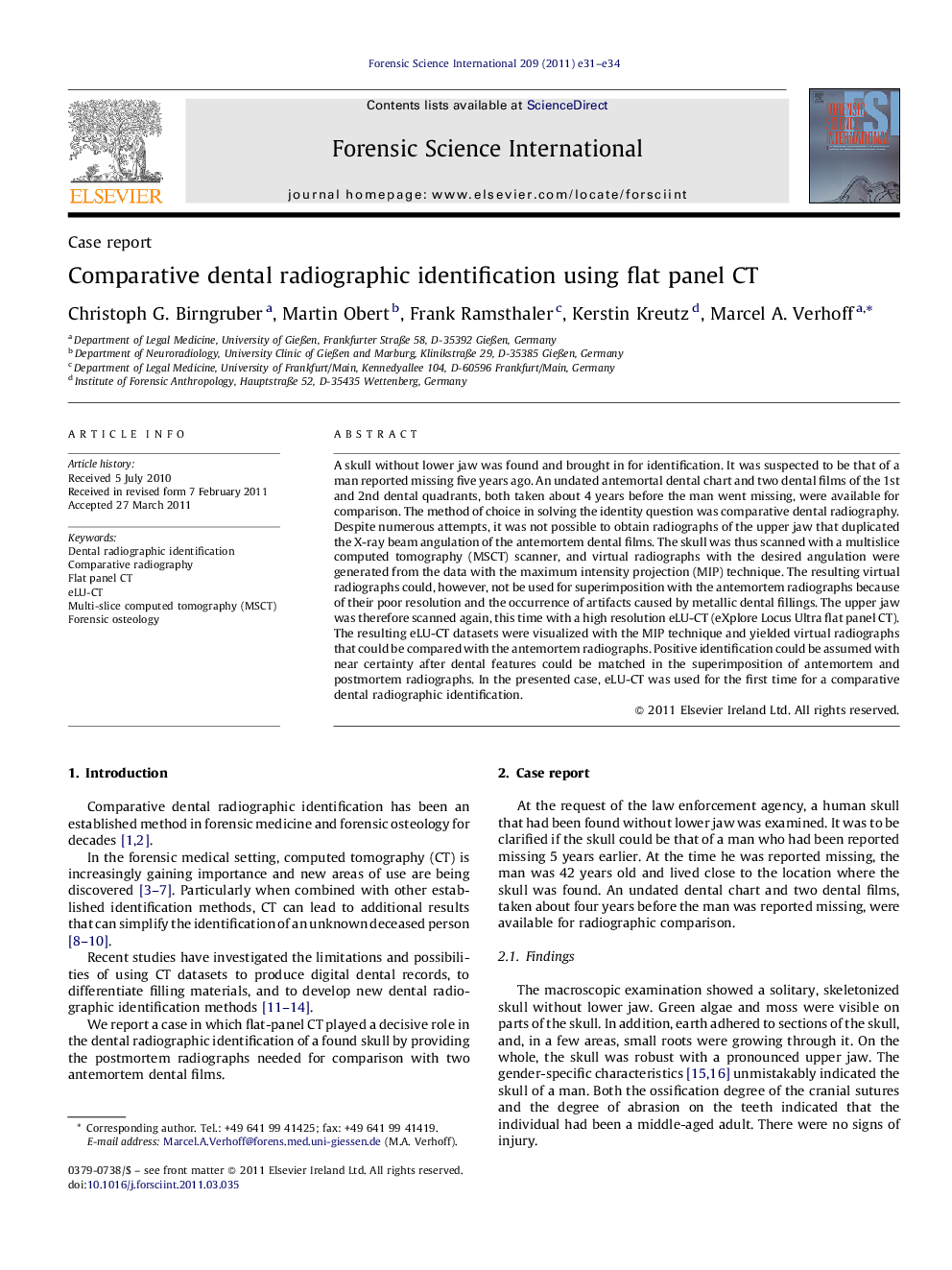| Article ID | Journal | Published Year | Pages | File Type |
|---|---|---|---|---|
| 96809 | Forensic Science International | 2011 | 4 Pages |
A skull without lower jaw was found and brought in for identification. It was suspected to be that of a man reported missing five years ago. An undated antemortal dental chart and two dental films of the 1st and 2nd dental quadrants, both taken about 4 years before the man went missing, were available for comparison. The method of choice in solving the identity question was comparative dental radiography. Despite numerous attempts, it was not possible to obtain radiographs of the upper jaw that duplicated the X-ray beam angulation of the antemortem dental films. The skull was thus scanned with a multislice computed tomography (MSCT) scanner, and virtual radiographs with the desired angulation were generated from the data with the maximum intensity projection (MIP) technique. The resulting virtual radiographs could, however, not be used for superimposition with the antemortem radiographs because of their poor resolution and the occurrence of artifacts caused by metallic dental fillings. The upper jaw was therefore scanned again, this time with a high resolution eLU-CT (eXplore Locus Ultra flat panel CT). The resulting eLU-CT datasets were visualized with the MIP technique and yielded virtual radiographs that could be compared with the antemortem radiographs. Positive identification could be assumed with near certainty after dental features could be matched in the superimposition of antemortem and postmortem radiographs. In the presented case, eLU-CT was used for the first time for a comparative dental radiographic identification.
